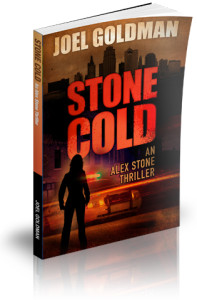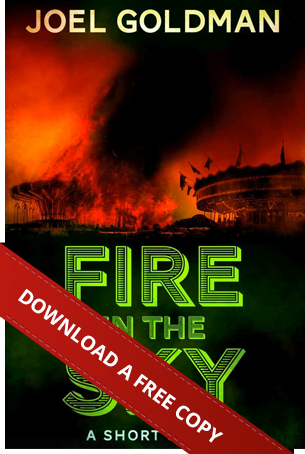Great crime writers like James Patterson, Lee Child, Michael Connelly, and even horror writers like Stephen King draw readers into their stories by creating complex villains we love to hate. In my best selling crime novels, I pay just as much attention to developing the villain (or in some cases, villains) as I do when crafting the protagonist. Both characters must have strong, complex personalities and interest the reader to the point of near obsession. If a writer can do that, he or she has pulled the reader into the dark world all thriller readers want – fast, dangerous, and with plenty of unexpected twists and turns.
 Take a break from your schedule and grab a copy of Stone Cold, the first in my new Alex Stone Thriller Series. Then come back and let me know what you think about the anti-hero. After all, I’m working on the second in the series. You won’t want to miss a word of any book in this fast-paced thrill ride series.
Take a break from your schedule and grab a copy of Stone Cold, the first in my new Alex Stone Thriller Series. Then come back and let me know what you think about the anti-hero. After all, I’m working on the second in the series. You won’t want to miss a word of any book in this fast-paced thrill ride series.
What Makes a Great Villain?
Last year, Publishers Weekly interviewed Mark Sullivan, a James Patterson coauthor, about working with the famous thriller writer. Sullivan divulged that when they began working together, Patterson reiterated the fact that they write to entertain their readers, not to educate and “enlighten” them. Sullivan went on the say that Patterson told him repeatedly, “ ‘To do that, our villains must be worthy opponents. The reader has to believe that the bad guy is fascinating enough, clever enough, and bad enough to defeat our hero.’ ”
Check out a few of my tips about creating a worthy villain:
- Bad guys everywhere you look – perhaps you see someone getting read the riot act by his boss at your local supermarket. They use hushed tones, but the acrimony in the boss’ voice is unmistakable. Maybe the twenty-something, quiet clerk has had enough of this overbearing boss – enough to push him over the edge. Start viewing the little vignettes of everyday life through the eyes of a crime writer, not the eyes of a typical citizen.
- A flaw here, a flaw there – use your author’s eye to observe the mistakes and volatile moods of those around you and embellish upon them, making their flaws larger than life. From here, you can begin adding layer upon layer of villainy to your emerging character, creating a fictional Dr. Evil type whose narcissism or other glaring flaws far outweigh the good qualities.
- Create a questionable past for your anti-hero – talk about the sins of the past that your villain has committed. Is your antagonist a petty mischief-maker with an evil twist, or is she a sick psychopath of astounding proportions? Slowly draw your reader into the facts of your villain’s dark past.
- Give the bad guy (or gal) some endearing qualities – a friend of mine mentioned how uncomfortable it made her feel that she had sympathy for the psychopathic killer in Thomas Harris’ book, Red Dragon. She mentioned that as she learned about the killer’s abusive childhood and how he struggled with what he was becoming, she felt a type of tenderness for him that she desperately tried to squelch because it made her uncomfortable. Adding a layer of “nice” to your horrifically twisted villain gives him a more complex character and makes him infinitely more interesting.
As a writer, ask yourself what makes you interested with and fascinated by an antagonist in a story. The things that interest you will likely interest your readers and you’ll have an easier time creating a believable character if he or she actually interests you personally. This post, Interesting Psychopaths in Fiction, includes some clever insight into various types of villains. I also enjoyed Sheila Bugler’s picks for the Top Ten Female Villains in Crime Fiction. Check out her picks and add your own in the comment section. I’d also enjoy hearing about what makes you love to hate the bad guys in crime thrillers.
Image credit: photo of Drew Barrymore in Scream courtesy of ragetv [dot] com











